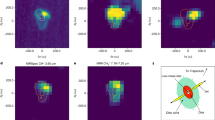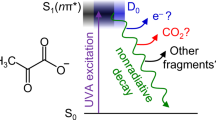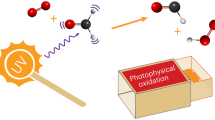Abstract
IT has been generally assumed that the hydrogen chloride produced when a mixture of hydrogen and chlorine is illuminated has no effect on the velocity of reaction. If, however, the magnitudes of the Draper effects are considered for two reaction mixtures which do not differ in hydrogen, chlorine, and oxygen concentrations, but only in the circumstance that one (a) contains no hydrogen chloride, and the other (b) an amount of hydrogen chloride equal, say, to that of the concentration of chlorine, then the magnitude of the Draper effect in (a) can be observed to fall off very rapidly on illumination, while that of (b) shows no such rapid initial fall but is always smaller than the initial value in the case of (a). Indications of a rapid initial fall in reaction velocity in mixtures containing initially no hydrogen chloride can indeed be recognised in the ‘velocity coefficients’ given by several workers; for example, by Bodenstein and Dux.1
This is a preview of subscription content, access via your institution
Access options
Subscribe to this journal
Receive 51 print issues and online access
$199.00 per year
only $3.90 per issue
Buy this article
- Purchase on Springer Link
- Instant access to full article PDF
Prices may be subject to local taxes which are calculated during checkout
Similar content being viewed by others
References
Z. physik. Chem., 85, 316; 1913.
Proc. Roy. Soc., A., 130, 591; 1931.
J. Chem. Soc., 2706; 1930.
Author information
Authors and Affiliations
Rights and permissions
About this article
Cite this article
RITCHIE, M., NORRISH, R. Photochemical Reaction between Hydrogen and Chlorine in the Presence of Oxygen. Nature 129, 243–244 (1932). https://doi.org/10.1038/129243a0
Published:
Issue Date:
DOI: https://doi.org/10.1038/129243a0
Comments
By submitting a comment you agree to abide by our Terms and Community Guidelines. If you find something abusive or that does not comply with our terms or guidelines please flag it as inappropriate.



